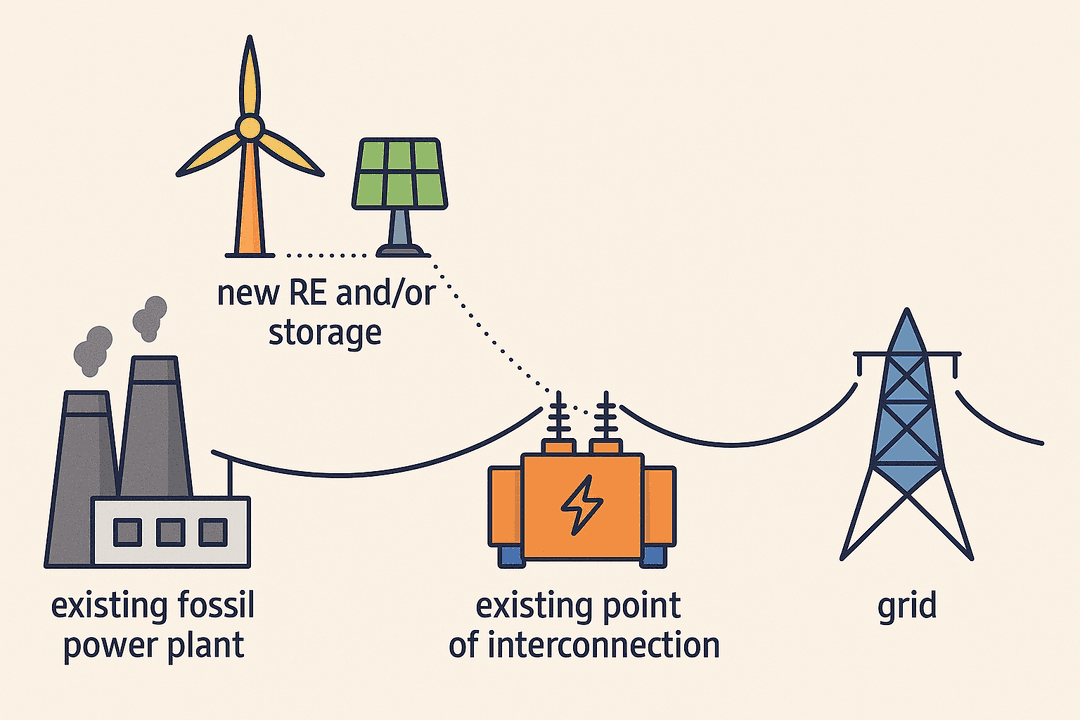SurplusInterconnectionin California
Accelerating Clean Energy Deployment by Leveraging Existing Grid Infrastructure
California's clean energy transition faces critical interconnection bottlenecks despite ambitious goals
The Problem
Massive Queue Bottleneck
CAISO's interconnection queue has 505 GW of capacity waiting with average delays of 4-5 years. The queue is dominated by solar (152 GW) and storage (308 GW), with 99% being renewable and storage technologies.
Rising Electricity Costs
California electricity rates have surged by 44% since 2020 to reach $295/MWh for residential customers. Capacity prices have more than doubled from $94/MW-day in 2019 to $209/MW-day in 2024, reflecting growing resource adequacy challenges.
Economic Opportunity Loss
California is losing significant economic opportunities due to power constraints. A Bloomberg survey found access to power is the #1 deciding factor for data center location. Despite California's technological leadership, its data center growth (24% by 2035) dramatically lags behind ERCOT (161%) and the US average (67%) due to high power costs and grid capacity limitations.
The Solution: Surplus Interconnection
Surplus Interconnection for California
Surplus Interconnection Service allows new electricity supply resources to connect to the grid using existing infrastructure that serves already operating generators, without exceeding the total output capacity already allocated to the existing resource. FERC Order 845 (2018) cleared a regulatory pathway for generators to add new electricity resources to the grid by utilizing surplus capacity at existing interconnection points.
Key Results
Available Surplus Capacity
California can add 53 GW of clean energy capacity through surplus interconnection, including 36 GW of solar, 17 GW of wind, and 26 GW of energy storage at existing sites without new transmission.
SB100 Goals Comparison
Surplus interconnection can meet 92% of California's 2035 solar targets and 200% of its wind targets, providing over 100% of combined renewable capacity needed for 2035 SB100 targets.
Time & Cost Benefits
Surplus interconnection projects can be completed in 1-2 years compared to 5 years for new interconnections. RE and storage deployment using surplus interconnection can save $7B in interconnection costs and expensive transmission upgrades.
Thermal Interconnections
Over 15.7 GW of California fossil capacity has capacity factor less than 15%, leaving grid connections unused for significant periods. Moreover, 16.1 GW of thermal capacity has variable costs exceeding $50/MWh, with 15.6 GW meeting both criteria. By co-locating new solar and wind generation at these sites, we can bypass lengthy interconnection queues and add cheap electricity while making use of the current infrastructure.

Key Results
Abundant Local Resources
3,073 GW SolarOver 3,073 GW of solar and 369 GW of wind potential exists near California thermal plants. This enormous renewable resource can enable clean energy deployment at existing interconnection points.
Urban Area Plants
13.8 GW Capacity51 thermal facilities (37% of total) with 13.8 GW capacity are located in urban areas. We removed these plants from the surplus interconnecton analysis though they are great candidates for adding battery storage after the thermal plants get retired.
Cost-Effective Today
100% ViableAt 100% of existing fossil plants (33.6 GW), building new solar is already cheaper than running the existing plant. For wind, this is true at 25% of plants (8.4 GW). By 2030, this will increase to 40% (13.4 GW).
Ready for Renewables
24.08 GW by 203024.08 GW of renewable energy (15.7 GW solar and 8.4 GW wind) can be economically integrated at California thermal plants by 2030
Quick Wins Available
15.7 GW Ready15.7 GW of California thermal capacity operates at less than 15% capacity factor, leaving grid connections unused most of the time and creating immediate opportunities for surplus interconnection.
Renewable Interconnections
California renewable plants have low capacity values (11% solar, 17% wind) and poor interconnection utilization (Solar: 25.6%, Wind: 25.8%), meaning expensive grid infrastructure sits idle much of the time. Adding 6-hour storage can dramatically increase capacity value and utilization rates to levels comparable to baseload gas plants, effectively turning variable renewables into firm power resources.

Key Results
Massive Renewable Potential
1,773 GW TotalCalifornia's existing renewable sites have enormous potential for additional capacity, with approximately 1,583 GW of solar and 190 GW of wind resource potential within 6 miles of existing RE plants.
Significant Storage Potential
26 GW StorageAdding 6-hour battery storage at California's solar and wind sites would deliver 26 GW of firm, dispatchable capacity - helping meet peak demand and enhance grid reliability.
Expanded Renewable Capacity
29.1 GW CombinedCalifornia's existing renewable interconnections can support additional 20.0 GW solar and 9.1 GW wind, representing a 112% increase in clean energy generation capacity with no new grid connections.
Maximized Utilization
71.6% Solar | 87.2% WindDeploying RE and storage and existing interconnections maximizes expensive grid infrastructure usage in California, significantly improving interconnection utilization to 71.6% for solar and 87.2% for wind plants. This transforms intermittent renewables into firm resources comparable to gas CCGT plants.